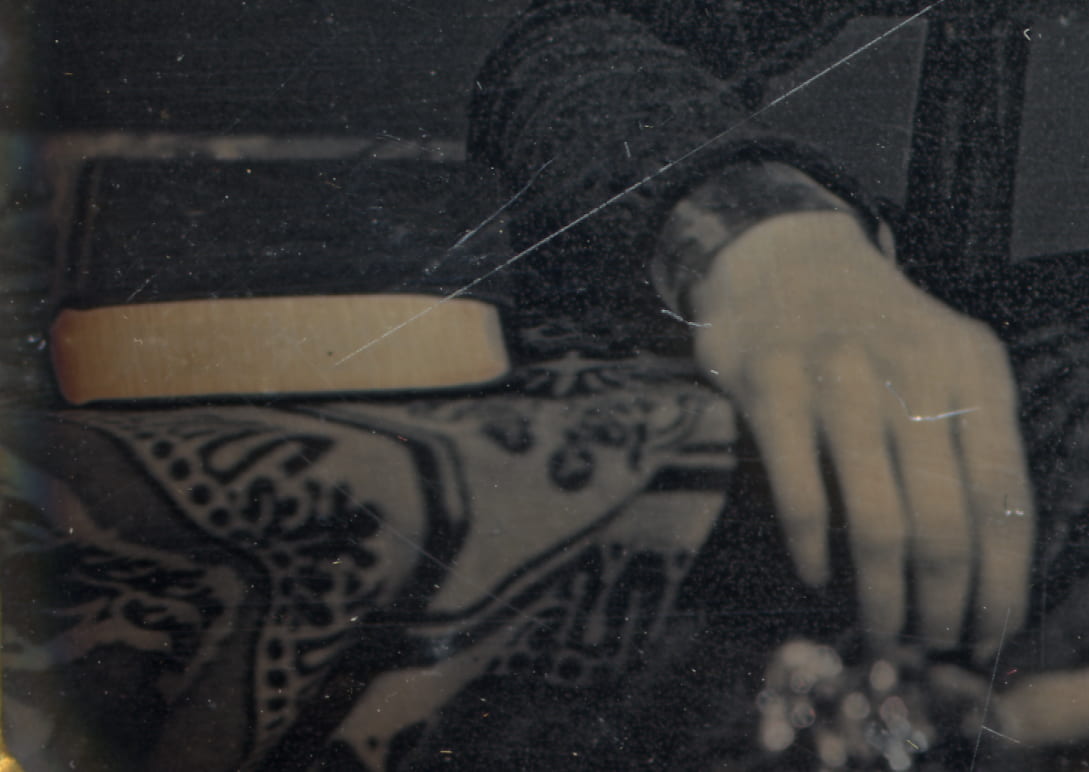In this week’s post, guest blogger Polly Longsworth writes about a work in the Dickinson family library.
The year after he graduated from Yale College in 1823, Edward Dickinson purchased a two-volume edition of Washington Irving’s terrifically popular Sketch Book of Geoffrey Crayon. The book contained fourteen fictional stories, including “Rip Van Winkle” and “The Legend of Sleepy Hollow,” that Irving had written early in his career and published individually as pamphlets. More recently, clever publishers had begun to bind the pamphlets into book form. Twenty-one-year-old Edward scooped up a copy of the Fourth American Edition of The Sketch Book, published by C.S. Van Winkle of New York in 1824. He immediately wrote his name and the date of acquisition, 1824, on the flyleaf of both volumes.

Fifty years later, around the time of Edward’s death in June 1874, his daughter Emily lifted the title from the big brown bookcase in the Homestead Library and scissored out the two flyleaves bearing her father’s signatures. At some time in the weeks and months to follow, she inverted the sheets and wrote a poem in pencil in each of the empty spaces yawning above his upside-down name. One poem begins, “The most pathetic thing I do\ Is play I hear from you -” (AC-ED412; Fr.1345); the other begins, “I send you a decrepit flower” (AC-ED239; Fr1346). Possibly she wrote the poems directly into the books and later scissored them out. We simply don’t know, although we do realize from other evidence that the poet had few qualms about scissoring items from books on the family shelves.


Subsequently The Sketch Book disappeared from the Dickinson Library – sold at auction? – thrown out? –given away? Who knows? The title isn’t among the large collections of Dickinson Library books now at Harvard and Brown Universities. It isn’t at Amherst College, or Yale, as are a few scattered Dickinson-associated books. Were it not for the sharp eye of Dickinson scholar Jay Leyda, who inventoried the Dickinson manuscript poems and letters given to Amherst by Millicent Todd Bingham in 1950, we wouldn’t know an early edition of Irving’s Sketch Book ever stood on the Dickinson’s book shelves.
Mr. Leyda, in listing and annotating Emily’s poems for the Amherst College Archives, noticed that “I send you a decrepit flower” and “The most pathetic thing I do” were “on flyleaf” clipped from Edward Dickinson’s copy of the Sketch Book. Leyda, who is no longer living, didn’t mention in his inventory notes how he had identified the source of the flyleaf — or was it flyleaves?

(AC-ED Box 32)

(AC-ED Box 32)
When Harvard published the variorum edition of The Poems of Emily Dickinson in 1958, its editor Thomas H. Johnson separated slightly the dates at which the two poems had been written (1873 and 1874), and noted only that each had been penciled on the flyleaf of a book. In 1998, editor Ralph Franklin, in his reorganized 1999 Harvard edition of The Poems of Emily Dickinson, did incorporate Leyda’s mention of The Sketch Book as he renumbered the two poems sequentially and dated them by handwriting analysis to ca. 1874.
For a reader familiar with the Dickinson’s library, coming upon the Franklin note was a surprise that required sleuthing backwards. What copy of The Sketch Book? A copy old enough to be Edward’s in 1824 wasn’t on any known list of Dickinson library books. What was the source of Franklin’s comment? The reader consulted Mimi Dakin, Archives Specialist at Amherst College, who dug into Leyda’s inventory for the two poems and discovered that the association with Irving was his notation. But how had he known it? Had he gleaned the information from Mrs. Bingham, who had written several books about Dickinson? Or was it something Bingham knew from her mother, Mabel Loomis Todd, the earliest editor of Dickinson’s poems, through whose hands so much Dickinson family material (and possibly The Sketch Book itself?) had passed? Alas, no Bingham or Todd inventories or correspondence enlightened us.
Dakin next examined the poems themselves, which are on separate flyleaves. In turning each poem over in its archival folder, she saw what Leyda had seen but not incorporated into his notes, that there was a faint reverse bleed from the title page of Vol. II of The Sketch Book on the back of “The most pathetic thing I do.” When blown up, and re-reversed, most of the title page could be read: it was the Fourth American Edition in two volumes, published in New York by C.S. Van Winkle. The only thing illegible was the date of the edition at the bottom, a crucial bit of information.


On line, this reader located a single two-volume copy of C.S. Van Winkle’s Fourth American edition, dated 1824. It matched the date of Edward’s acquisition, and after a bibliographic search, turned out to be the earliest edition of the book Van Winkle published, and his only edition in that year. The on-line copy was purchased for the Emily Dickinson Museum’s Replenishing the Shelves project, and will sit in the bookcase of the Homestead Library, the same bookcase from which a copy of the title was long-ago removed. The death of her father was an irreparable loss to Emily Dickinson. One can only speculate that in cutting the fore-pages from one of his favorite books and using them to send a tumble of words down the page to where her father’s name lay looking up at her, she was finding a way to solace her great grief.
–Polly Longsworth

